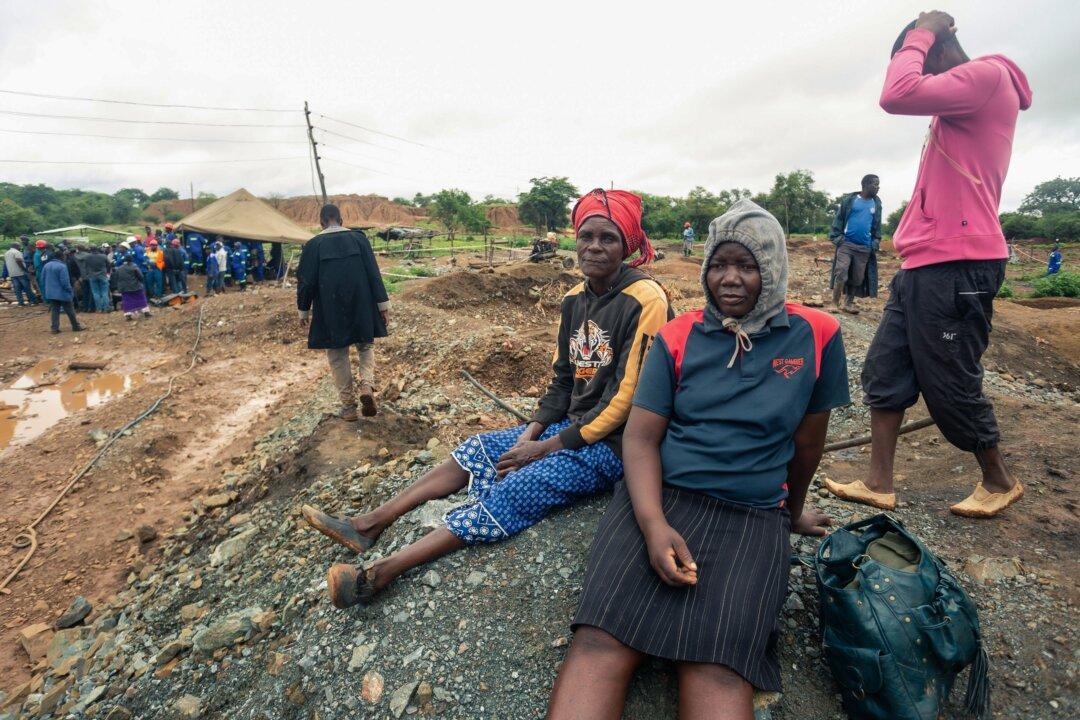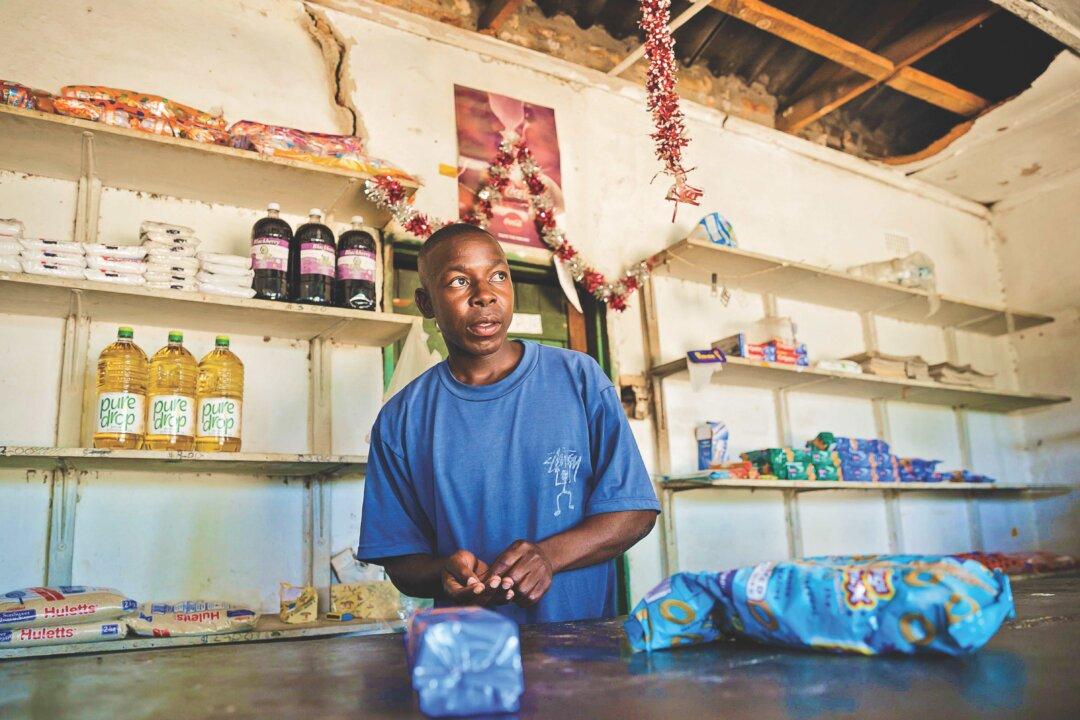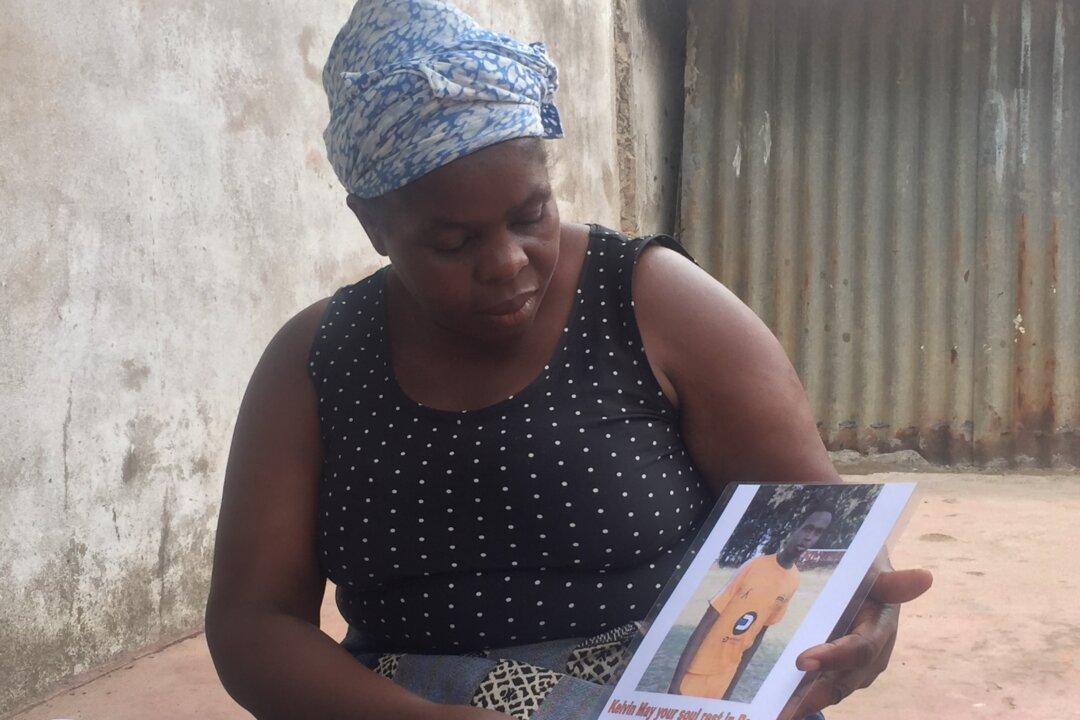HARARE, Zimbabwe—“He looked at me and smiled,” says Ronika Tafireyi, after seeing her husband Thinkmore Madimutse being taken to a nearby tent by a rescue team after he was saved from the Battlefields mine disaster.
Madimutse was the first of eight survivors to be rescued from the mine in Zimbabwe—with 24 bodies so far recovered—after heavy rains flooded and trapped illegal miners in Kadoma, 90 miles west of the country’s capital Harare, on the night of Feb. 12. Authorities said they had been unable to initiate rescue operations until Feb. 16 because of continued rain.




